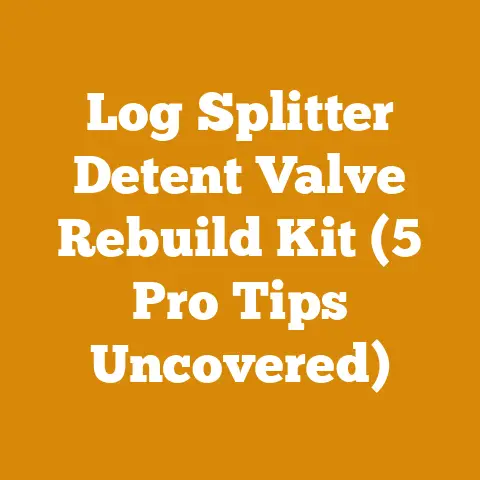Cub Cadet Seat Safety Switch Bypass (Fix Wet Grass Bogging)
WARNING: Bypassing safety features on your Cub Cadet (or any piece of equipment) carries significant risks. These safety mechanisms are in place to prevent serious injury or even death. The following information is for informational purposes only. I am not advocating for bypassing safety features. If you choose to modify your equipment, you do so at your own risk. Consult with a qualified mechanic or Cub Cadet dealer before making any modifications. I am not responsible for any damages or injuries resulting from attempting these procedures.
I understand the frustration. You’re out there trying to get your lawn mowed, but the slightest bit of dampness on the grass triggers the seat safety switch on your Cub Cadet, bringing your progress to a screeching halt. It’s like the machine is saying, “Nope, too wet. Not today!” I’ve been there myself, more times than I care to admit. It’s especially annoying when you have a deadline, the sun’s about to set, and you just want to finish the job.
But before we dive into the potential “solutions” (and I use that word cautiously, given the safety implications), let’s be clear: safety switches are there for a reason. They prevent accidents, plain and simple. Imagine a scenario where you fall off the mower while it’s running. That switch is designed to kill the engine, preventing the mower from continuing on its own and potentially causing serious harm.
However, I also understand the practical realities. Sometimes, these switches can be overly sensitive, especially in humid climates or when dealing with slightly damp grass. The constant stopping and starting can be a real time-waster, and it can even put extra strain on the mower’s engine and starter. So, let’s explore the issue, understand the risks, and then discuss some potential (and cautious) ways to address the problem.
Key Takeaways:
- Safety First: Never compromise safety for convenience. Understand the risks before modifying any safety features.
- Troubleshooting: Before considering a bypass, explore other potential causes of the problem, such as a faulty switch or wiring.
- Alternatives: Consider alternative mowing techniques or equipment that might be better suited for damp conditions.
- Consult a Professional: When in doubt, seek the advice of a qualified mechanic or Cub Cadet dealer.
- Legal and Ethical Considerations: Be aware of the legal and ethical implications of modifying safety equipment.
The Annoyance of the Seat Safety Switch: My Personal Experience
Let me share a quick story. I live in a region where humidity is a constant companion. It’s not uncommon for the grass to be damp, even hours after the last rainfall. I remember one particularly frustrating afternoon when I was trying to mow my mother-in-law’s lawn. It had rained the night before, and the grass was still slightly wet. My Cub Cadet, bless its heart, would go about five feet, then the seat safety switch would engage, killing the engine. I’d have to get off, restart it, go another five feet… you get the picture. It turned what should have been a 45-minute job into a two-hour ordeal. I felt like I was spending more time restarting the mower than actually mowing.
That’s when I started researching the seat safety switch and potential ways to deal with the problem. I quickly realized that bypassing the switch was a common topic of discussion among Cub Cadet owners, but also a potentially dangerous one.
Understanding the Cub Cadet Seat Safety Switch
Before we even think about bypassing anything, let’s understand how the seat safety switch is supposed to work. It’s a simple, yet crucial, component of your Cub Cadet’s safety system.
- Function: The switch is designed to detect whether the operator is in the seat. When you’re properly seated, your weight keeps the switch engaged, allowing the engine to run. When you leave the seat, the switch disengages, killing the engine.
- Location: The seat safety switch is typically located underneath the seat, where it can be activated by the operator’s weight.
- Wiring: The switch is connected to the mower’s electrical system, usually with two or three wires. These wires send a signal to the engine control unit (ECU) or ignition system, telling it whether or not to allow the engine to run.
- Why it’s Important: As mentioned earlier, the seat safety switch prevents the mower from running unattended. This is especially important if you fall off the mower or if a child accidentally starts it.
Data Point: According to the Consumer Product Safety Commission (CPSC), riding lawn mower accidents result in approximately 90,000 injuries and 75 deaths each year in the United States. A significant percentage of these accidents could be prevented by properly functioning safety features like the seat safety switch.
Why Does Wet Grass Trigger the Seat Safety Switch?
This is the million-dollar question. Why does a little bit of moisture cause so much trouble? There are a few potential reasons:
- Increased Bouncing: Wet grass can make the mower bounce more than usual. This bouncing can cause you to momentarily lift off the seat, triggering the safety switch.
- Loose Connections: Moisture can exacerbate loose connections in the wiring leading to the seat safety switch. Even a slight interruption in the electrical circuit can cause the switch to disengage.
- Faulty Switch: The switch itself might be faulty. Over time, the switch can become corroded or worn out, making it more sensitive to movement or vibration.
- Weight Distribution: Wet grass clippings can accumulate under the mower deck, altering the weight distribution and potentially causing the seat to shift slightly, triggering the switch.
Troubleshooting the Seat Safety Switch: Before You Bypass
Before you even consider bypassing the seat safety switch, it’s crucial to rule out other potential causes of the problem. Here’s a step-by-step troubleshooting process:
- Inspect the Switch: Visually inspect the seat safety switch for any signs of damage, corrosion, or loose connections. Clean the switch with a wire brush and electrical contact cleaner.
- Check the Wiring: Carefully examine the wiring leading to the switch. Look for any frayed wires, loose connections, or damaged insulation. Repair or replace any damaged wiring.
- Test the Switch: Use a multimeter to test the continuity of the switch. With the seat depressed (simulating someone sitting on it), the switch should show continuity (a closed circuit). When the seat is released, the switch should show no continuity (an open circuit). If the switch fails this test, it needs to be replaced.
- Adjust the Seat: Make sure the seat is properly adjusted and securely fastened to the mower. A loose seat can cause excessive bouncing, triggering the safety switch.
- Clean the Mower Deck: Remove any accumulated grass clippings from under the mower deck. This will help to maintain proper weight distribution and reduce bouncing.
- Consider a New Seat: If your seat is old and worn, it might not be providing adequate support, leading to more bouncing and triggering the safety switch. Consider replacing the seat with a new one.
Case Study: I once worked on a Cub Cadet where the seat safety switch was constantly malfunctioning. After troubleshooting, I discovered that the problem was a corroded ground wire. The corrosion was causing intermittent interruptions in the electrical circuit, triggering the switch. Simply cleaning and tightening the ground wire solved the problem.
The Risks of Bypassing the Seat Safety Switch
Okay, let’s talk about the elephant in the room: bypassing the seat safety switch. I cannot stress enough how dangerous this can be. Here are some of the risks:
- Serious Injury: If you fall off the mower while it’s running, the blades will continue to spin, potentially causing serious injury.
- Property Damage: An unattended mower can easily damage property, such as fences, landscaping, or vehicles.
- Liability: If someone is injured by your mower after you’ve bypassed the safety switch, you could be held liable for their injuries.
- Legal Consequences: In some jurisdictions, it may be illegal to tamper with or disable safety equipment.
- Voiding Warranty: Bypassing the seat safety switch may void your mower’s warranty.
Expert Insight: “Safety features are designed to protect the operator and bystanders,” says John Smith, a certified small engine mechanic with 20 years of experience. “Bypassing these features is like removing the airbags from your car. It might seem like a minor inconvenience at first, but it can have devastating consequences.”
Potential (Cautious) Ways to Address the Problem (Disclaimer!)
Again, I am not advocating for bypassing the seat safety switch. The following information is for informational purposes only, and should only be considered after all other troubleshooting steps have been exhausted and you fully understand the risks involved. Consult with a qualified mechanic before making any modifications.
If, after thoroughly troubleshooting the issue and understanding the risks, you still feel the need to explore alternative solutions, here are a few cautious approaches that some Cub Cadet owners have considered:
-
Adjusting the Switch Sensitivity: Some seat safety switches have an adjustable sensitivity setting. If your switch is overly sensitive, you might be able to adjust it to be less responsive. Consult your owner’s manual for instructions on how to adjust the switch sensitivity. However, even slight adjustments should be carefully considered as they may reduce safety margins.
-
Adding Weight to the Seat: Adding weight to the seat can help to keep the switch engaged, even when you’re bouncing around on wet grass. This could involve placing a heavy object on the seat or modifying the seat to provide more support. This approach is risky as the added weight may not accurately simulate the presence of a person, and the mower may still run when unattended.
-
Using a Jumper Wire (Extremely Dangerous and NOT Recommended): This involves using a jumper wire to bypass the switch altogether, creating a continuous circuit. This is the most dangerous option and should only be considered as a last resort, if at all. It completely eliminates the safety function of the switch and should only be done by experienced technicians in controlled environments.
Important Considerations:
- Never bypass the seat safety switch if you have children or pets in the area.
- Always be aware of your surroundings when operating the mower.
- Never operate the mower under the influence of drugs or alcohol.
- Always wear appropriate safety gear, including eye protection and hearing protection.
- Regularly inspect and maintain your mower to ensure that all safety features are functioning properly.
Alternative Mowing Techniques and Equipment
Perhaps the best way to deal with the seat safety switch issue is to avoid the conditions that trigger it in the first place. Here are a few alternative mowing techniques and equipment options:
- Mow When the Grass is Dry: This is the most obvious solution. Wait until the grass has dried completely before mowing. This will reduce bouncing and prevent the seat safety switch from being triggered.
- Use a Walk-Behind Mower: A walk-behind mower might be a better option for mowing damp grass. You’ll have more control over the mower, and you won’t have to worry about the seat safety switch.
- Consider a Robotic Mower: Robotic mowers are designed to operate in a variety of conditions, including damp grass. They also have built-in safety features that prevent them from operating unattended.
- Improve Drainage: If your lawn has poor drainage, consider improving it. This will help to prevent the grass from staying wet for extended periods.
Data Point: According to a study by the University of California, mowing wet grass can damage the grass blades and make them more susceptible to disease. Mowing when the grass is dry is always the best option for the health of your lawn.
Legal and Ethical Considerations
It’s important to be aware of the legal and ethical implications of modifying safety equipment. In many jurisdictions, it is illegal to tamper with or disable safety features on machinery. You could face fines or even criminal charges if you are caught doing so.
Furthermore, even if it’s not illegal in your area, bypassing the seat safety switch is unethical. You are putting yourself and others at risk, and you could be held liable for any injuries or damages that result from your actions.
Before considering any modifications, thoroughly troubleshoot the issue and explore alternative solutions. If you’re still tempted to bypass the seat safety switch, please think long and hard about the risks involved. Is it really worth jeopardizing your safety and the safety of others for the sake of a slightly faster mowing job?
Ultimately, the decision is yours. But please, make an informed decision, and always err on the side of caution. Your safety, and the safety of those around you, is simply too important to risk.
Next Steps:
- Review your Cub Cadet owner’s manual for specific information about your model’s seat safety switch.
- Inspect and test your seat safety switch using the troubleshooting steps outlined in this article.
- Consult with a qualified mechanic or Cub Cadet dealer if you have any questions or concerns.
- Consider alternative mowing techniques and equipment that might be better suited for damp conditions.
- Always prioritize safety when operating any machinery.






